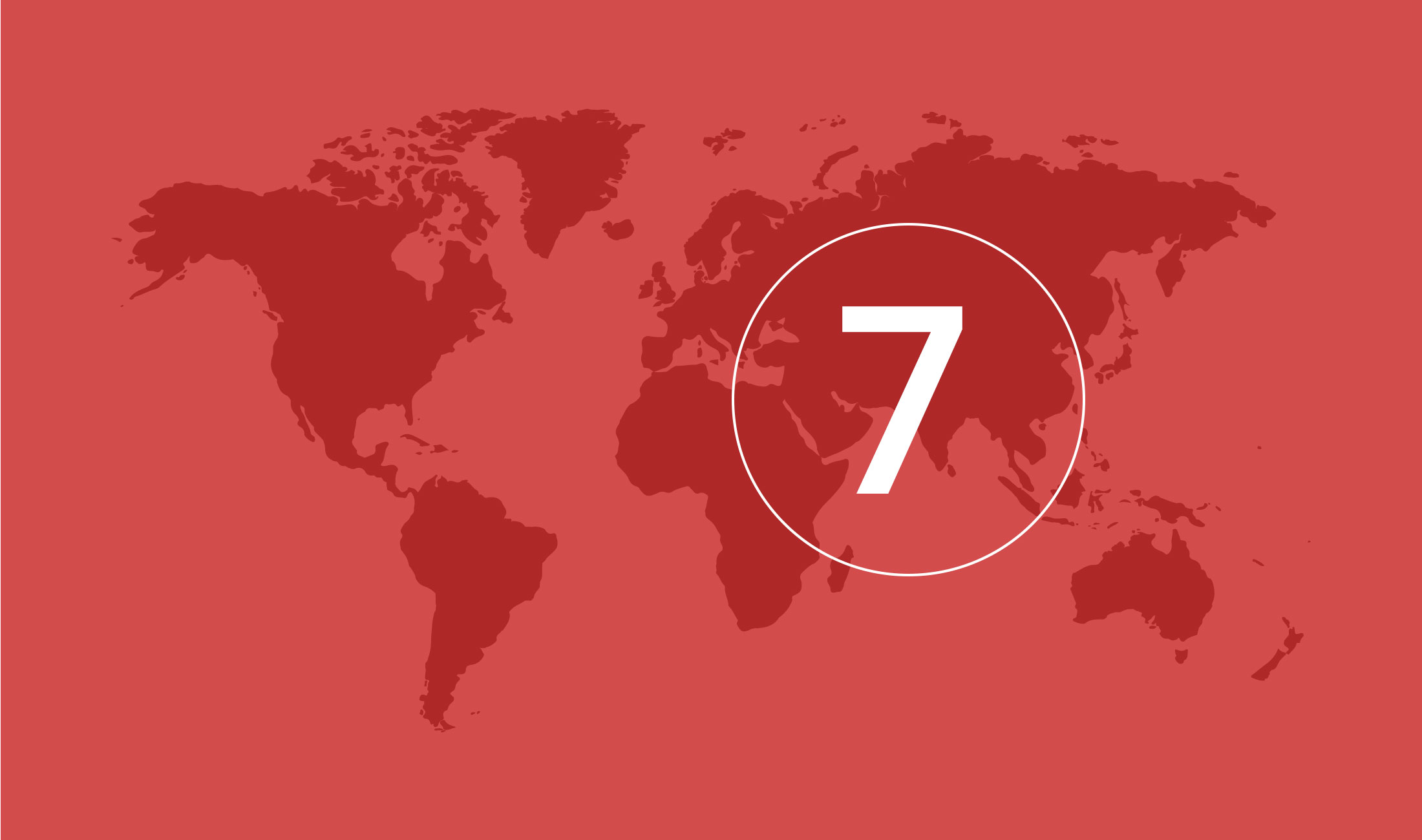
Pakistan
Category
7
- 0
- 1
- 2
- 3
- 4
- 5
- 6
- 7
| Risk type | Short | Long |
|---|---|---|
| Sovereign |

|

|
| Public |

|

|
| Bank |

|

|
| Corporate |

|

|
The icons indicate EKN's risk assessment.

No policy established

Normal risk assessment

Restrictive risk assessment

Normally off cover

OECD or EU countries
Country risk analysis
Country risk analysis archive
Country Risk Analysis of Pakistan
The latest Country Risk Analysis of Pakistan was issued in June 2024.
Structural challenges hamper growth
The fifth largest population in the world, 245 million, and a relatively large domestic economy create a certain amount of growth potential and resilience. The economy is largely driven by household consumption (80% of GDP) while investment is low (under 15% of GDP). The service sector dominates on the production side (58% of GDP). The vital agricultural sector (23% of GDP) employs approximately 40 per cent of the workforce and around 70 per cent of the country’s exports are directly or indirectly derived from agriculture. Meanwhile, the manufacturing sector is underdeveloped (12% of GDP).
As energy and raw materials importer with weak export competitiveness, the country’s imports of goods and services are twice the size of its limited exports (9% of GDP). While a robust flow of remittances (8% of GDP), over half of which originate in the Gulf States, stabilises consumption and finances most of the country’s structural trade deficit, elevated debt service and low direct investment leave it reliant on external funding and with a fragile external position.
As one of Asia’s poorest countries, Pakistan faces several structural challenges. Reliance on agriculture and a fossil-heavy energy mix make the country highly vulnerable to climate change. Over the last decade, Pakistan has been among the ten countries most affected by extreme weather events. With average GDP growth of 3.6 per cent in the period 2014–2023, growth dynamics are insufficient to create jobs for a rapidly growing youth demographic. This in turn contributes to social and religious tensions, with a latent risk of political instability.
Pakistan is afflicted with violence, with militant Islamism and armed conflicts in parts of the country. The security situation has deteriorated, and terrorist activity has increased, including a domestic Taliban movement, following the Taliban’s seizure of power in Afghanistan in 2021. Although parliamentary democracy was introduced in 2010, the military continue to exert considerable political influence behind the scenes. This fractious co-governance with civil governments occasionally makes for muddled policy.
The financial and political interests of the military establishment and dynastic political elites sometimes conflict with much-needed reforms. This makes the sustained pursuit of structural reforms and a disciplined economic policy more difficult. This situation is reflected in low levels of private sector investment, as well as weak government finances with a structural deficit caused by low tax revenue, subsidies to the agricultural and energy sectors, and a large and unprofitable state-owned-enterprises sector.
The debt-to-GDP ratio has increased over the last 10 years and amounted to approximately 75 per cent of GDP at the end of the financial year 2023/24 (30 June 2024). Interest payments swallow over 60 per cent of government revenue. Domestic financing has increased as the state has practically lost access to international capital markets. Sixty per cent of public debt is domestic, and credit extended to the public sector accounts for over 55 per cent of the assets in the banking system. This crowds out lending to the private sector, exposes the banks to sovereign risk and jeopardises the government’s ability to mobilise financing in the event of new crises.
Since 2015, the country’s alliance with China has led to major infrastructure investments in the China-Pakistan Economic Corridor (CPEC), which could potentially reduce bottlenecks in transport and energy generation. The pandemic, security concerns and economic difficulties have however caused delays and reduced the rate of investment. The challenge is to ensure economic returns in the form of strengthened growth and competitiveness on these largely debt-financed CPEC projects.
Emerging economic stabilisation
Pakistan is emerging from an economic crisis after a series of disruptions – such as the catastrophic floods of 2022, commodity price shocks and political tensions– drove up inflation and squeezed government and external finances in 2022-2023. A full-blown balance of payment crisis was averted thanks to an interim IMF programme from July 2023 to March 2024, which also released financing from China and the Gulf States. The programme was successfully implemented by Pakistan’s interim government prior to the general elections in February 2024. An unpopular austerity policy that increased energy tariffs and hiked taxes is expected to result in a small primary budget surplus (excluding interest payments) for the first time since 2005, as well as a gradual decline in the debt-to-GDP ratio.
The Pakistani rupee has stabilised after a significant weakening in 2021-2022, and inflation is on the way down. The current account deficit has also narrowed. This has helped to strengthen international reserves despite the easing of many of the import and currency restrictions that have occasionally paralysed industry. Thes positive developments have allowed the central bank some leeway to begin cutting its policy rate, albeit cautiously.
Pakistan saw a return to positive, if modest, GDP growth of approximately 2 per cent for the financial year 2024. Growth is forecasted to strengthen to 2.5–3.5 per cent in 2025. Importantly, in July the Government and the IMF reached a Staff Level Agreement on economic policies underpinning a new 37-month programme. Once approved the programme should anchor economic policies and ease external financing pressures. Significant external loans repayments come due in the next few years. The government is well aware that a renewal of the country’s at times fractious relationship with the IMF is critical to ensure the continued financial support of development banks and allies.
At the same time, the polarised political environment in the wake of the contested election results of February 2024 presents a challenge to the former coalition parties that have succeeded in forming a new government. Even though a prison sentence for corruption prevented the leader of the opposition from running for office, opposition candidates performed strongly but failed to secure a parliamentary majority. There is a risk that post-election political stability will prove fragile, jeopardising the reform agenda and undermining efforts to rebuild trust with the private sector and investors. The new IMF programme may therefore be fraught with implementation risks. Despite recent positive economic trends, institutional weaknesses and fragile government and external finances leave the economy vulnerable to shocks.
Business environment
Pakistan’s business environment is considered weak. In the World Bank’s World Governance Indicators (WGIs), the country’s economic institutions are ranked approximately 45 per cent lower than the average for emerging and developing economies in Asia. Although the country’s ranking in Transparency
International’s Corruption Perception Index improved slightly from 140th out of 180 countries in 2022 to 133rd in 2023, it remains well below the average rank for the region (94th). Challenges include a troubling security situation and an occasionally volatile macroeconomy, with considerable fluctuations in exchange rates, inflation and interest rates.
The country’s recurring strains in the balance of payments contributes to an evolving regulatory framework around foreign exchange, tariffs and import restrictions. It also entails periods of foreign exchange rationing in the banking system, sometimes at the behest of the central bank, making it difficult and more expensive for importers to obtain foreign currency to make payments. Structural problems in the energy sector, including tariffs that fail to cover costs, lead to an unstable power supply and circular debt, i.e. accumulation chains of unpaid bills in the economy. The predictability of the business environment is impeded by a lack of harmonisation of regulations and how they are applied across the country’s provinces and authorities, as well as by weak institutions and corruption.
The business environment has been on the reform agenda for many years with a view to strengthening investment levels and creating jobs. Proposed reforms include leveraging digitalisation to rationalise and simplify regulations and administrative procedures, such as permit and licence applications, customs clearance and taxation. Plans have also been drawn up to reform and privatise state-owned enterprises.
Reform progress appears to have been modest thus far, in part due to the pandemic, turbulent domestic politics and resistance from vested interests. Recent policies to promote investment appear to be directed less at systemic improvements and more towards facilitating individual major projects. Passed in late 2022, the Foreign Investment Promotion and Protection Act(FIPPA) gives parliament the power to approve special incentives for major investment projects. FIPPA was accompanied by the establishment of the Special Investment Facilitation Council (SIFC) in 2023 to facilitate prospective major projects in key sectors, such as mining and petroleum, by improving coordination between government agencies.
EKN’s policy
EKN classifies Pakistan in country risk category 7 on a scale of 0 to 7. In June 2024, the previously highly restrictive cover policy was eased. However, for public buyers we require a letter of credit or bank guarantee for short-term risk up one year, and there are restrictions on long-term transactions. Higher than standard charges typically apply to corporate buyers.
EKN’s commitment and experience
Between 2019 and 2023, EKN issued guarantees in 330 transactions for some 30 exporting companies at a value of SEK 3.9 billion. The flow is dominated by state-related counterparties and telecommunications. Small and medium-sized enterprises (SMEs) account for 2 per cent. Approximately 47 per cent of the volume of guarantees relates to short-term transactions of up to one year.
EKN’s total exposure is approximately SEK 3 billion. Sovereign risk dominates. EKN’s payment experience is good, with few claims in recent years and payment delays becoming less common. For guarantees issued between 2019 and 2023, delayed payments occurred in 10 per cent of transactions, which is explained, at least in part, by the high percentage of transactions based on letters of credit. While the average delay was 128 days, this figure was affected by the pandemic.
Claims are few and far between, and EKN has only settled claims in two transactions in the last decade. Sovereign receivables, which amount to USD 56 million, are covered by the country’s agreement with the Paris Club, which was renegotiated with the country’s external creditors from 1999 to 2001.
More for companies that want to export to Pakistan

EKN's guarantees
EKN's guarantees reduce the risk of payment defaults and help banks support businesses. Which guarantee suits your needs?
EKN's guarantees
Guarantee guide
Are you unsure which guarantee is the best fit for your specific transaction? Try our guarantee guide.
Guarantee guide